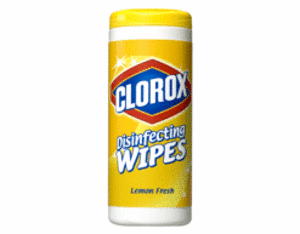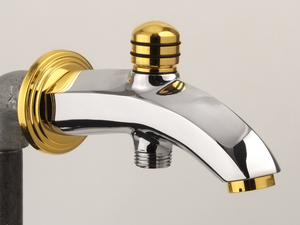These pre-moistened wipes were designed to kill germs conveniently and easily. Traditionally this has been done using sponges, rags and paper towels along with a bottle of cleaner.
The theory behind the development of these products is that using the sponge or paper towel for germy jobs can cause the bacteria to be spread around from one surface to another.
But the wipe will sanitize, disinfect, and then be thrown away.
When it comes to Clorox and Lysol, both brands’ wipes basically perform the same function: disinfect and sanitize hard, non-porous surfaces. Though they are hardly of equal quality.
I first discovered such wipes back in 2001. I had decided to try some of the Clorox Wipes, the lemon scented, and the first thing I was taken with was this wonderful scent. I loved it. I would find reasons (or invent them) to use the wipes, sometimes just holding one to my nose and taking in the clean, fresh aroma. I was also happy with how well they cleaned surfaces like counters, floors, toilets, and walls in every room. They left a glossy shine behind along with what I gleefully imagined was a trail of dead germs.
These nifty germ fighters do not contain bleach, although the Clorox name is usually associated with it. But wiped on a hard non-porous surface, it will be sanitized in 30 seconds, disinfected in 4 minutes.
My love affair with Clorox Wipes only hit one snag, and that is the strain it began to have on my tight grocery budget. The fact is, a 35 count canister of Clorox Wipes has an average price close to $3. This doesn’t seem like a lot of money in itself, or as just a one-time purchase. But regular use requires regular purchasing, and if you find that it’s difficult to afford the good meat and brand name products at the grocery store, the cost of these will add up quickly and won’t be able to fit in the budget for long.
Since I found myself in this predicament, I decided to buy the less expensive Lysol Sanitizing Wipes. I had never wanted to before, as I was sure that nothing could hold a candle to my wonderful Clorox wipes. Besides, usually when something is cheaper, there’s a good reason for it.
Like the Clorox wipes, which are available in regular fresh, lemon, orange and lavender scents, the Lysol Wipes come in a variety of scents including Citrus and Spring Waterfall, no lemon heaven here though. They are on average about 60 cents cheaper per canister than the same count of the Clorox wipes.
My experience with the Lysol Sanitizing wipes has not been as blissful. First of all, the wipes are not perforated as well as the Clorox Wipes are, and this makes taking only one wipe at a time difficult.
Also, that glossy glaze left by the Clorox wipes is noticeably absent after wiping a surface with the Lysol wipes. Instead, there is a look similar to what there would be if you wiped the surface with a paper towel soaked with water.
I clearly do not prefer the Lysol wipes to the Clorox ones, but the Lysol wipes are the ones I’ve settled for and use regularly. This is only for cost reasons, though. The Clorox wipes are reserved for special occasions, like a big tax refund.
Even though the Lysol wipes have inferior cleaning power and lack the fresh lemon scent of Clorox wipes, they fulfill the basic purpose of using these kinds of wipes in the first place: killing germs conveniently. The consolation for the underwhelming performance of the Lysol Wipes is the name: Lysol.
Lysol has been in the business of disinfecting for a long time, so that makes me feel well enough about using them over the Clorox brand.





